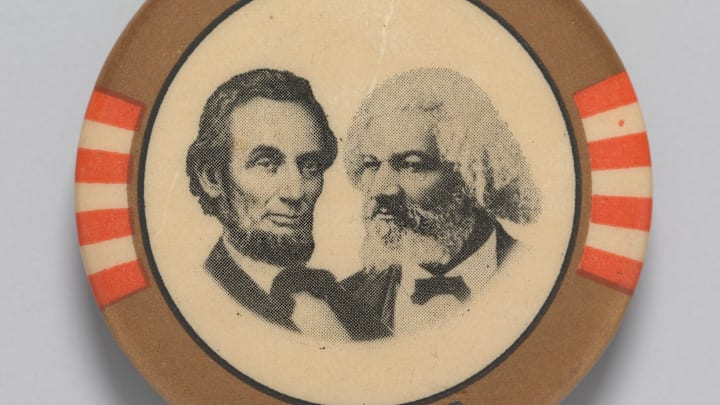The contributions that Black Americans have made to our society can be felt in every corner of our culture, from scientific breakthroughs and world-renowned inventions to timeless art. Black History Month allows us to recognize the Black trailblazers who have changed our world for the better and highlight accomplishments that have been ignored for far too long. To learn more about how Black History Month got its start, read on.
1. Carter G. Woodson created the precursor to Black History Month in 1926.

Carter G. Woodson, whose parents were formerly enslaved, was one of the first Black scholars to earn a Ph.D. from Harvard. Later, as a dean of Howard University, a historically Black institution in Washington, D.C., he was dismayed to find white academics ignoring Black history and the contributions of Black people to American life. He founded the Association for the Study of Negro Life and History to promote the study of African American history and attended the National Half Century Exposition and Lincoln Jubilee in 1915, an event in Chicago marking the 50th anniversary of Emancipation. Inspired by the gathering, Woodson established the first Negro History Week in 1926, designed to highlight and celebrate the Black experience. The Pittsburgh Courier reported the “movement was met with a favorable response throughout the country.”
2. February was chosen to honor Frederick Douglass and Abraham Lincoln.

It was no accident that Woodson placed Negro History Week during the second week of February—he did so to coincide with the birthdays of both Abraham Lincoln (February 12) and Frederick Douglass (February 1818), two of the most revered men among Black citizens in the United States.
3. Kent State University started a month-long celebration of Black history in 1970.
The national celebration of Black History Month in 1976 was actually preceded by a celebration at Ohio’s Kent State University in 1970. That year, students and faculty began using the month of February to acknowledge and celebrate Black culture. The movement began with a group called Black United Students, or BUS, which met on the university campus. While BUS took part in Woodson’s weeklong celebration, the members believed seven days was insufficient. BUS leaders Carl Gregory and Dwayne White pushed for an entire month, which school dean of student affairs Milton Wilson eventually approved. Black History Month instantly became a yearly staple on campus.
4. Black History Month was first officially observed in the U.S. in 1976.
Black History Month was first observed by the White House in 1976 when President Gerald Ford asked Americans to “seize the opportunity to honor the too-often neglected accomplishments of Black Americans in every area of endeavor throughout our history.” The current president has officially recognized February as Black History Month every year since. In 1986, Congress put the month's special designation into law.
5. Black History Month has a new theme every year.

Themes have been a part of Black History Month since its beginnings in the 1920s: Woodson thought they’d help give people something a little more specific to learn about and celebrate each year. These themes often shed light on the political and cultural landscape of the time: 2022’s, for example, was “Black Health and Wellness,” and 2020’s—ahead of an important general election—was “African Americans and the Vote.” Other previous themes have included 1929’s “Possibility of Putting Negro History in the Curriculum,” 1951’s “Eminent Negroes in World Affairs,” and 1972’s “African Art, Music, Literature; a Valuable Cultural Experience.” The theme for 2024 is “African Americans and the Arts.”
6. The UK celebrates Black History Month in October.

The UK recognizes its own version of Black History Month every October to honor its African and Caribbean immigrants. It was first organized by Akyaaba Addai-Sebo, a member of the Greater London Council, in 1987, and it features educational and social programs to celebrate prominent Black figures in British history. October 1987 was chosen as the inaugural event to coincide with the 150th anniversary of emancipation in the Caribbean.
7. Canada’s House of Commons officially recognized Black History Month in 1995.
In Canada, Black History Month was officially recognized by the House of Commons in 1995. The motion was introduced by Dr. Jean Augustine, the first Black woman elected to Parliament and the first to serve as a cabinet minister. It received unanimous approval, and in 2008, Donald Oliver, the first Black man appointed to the Senate, introduced a motion for the Senate to officially recognize February as Black History Month throughout the country; it also passed with unanimous approval.
A version of this story ran in 2022; it has been updated for 2024.
